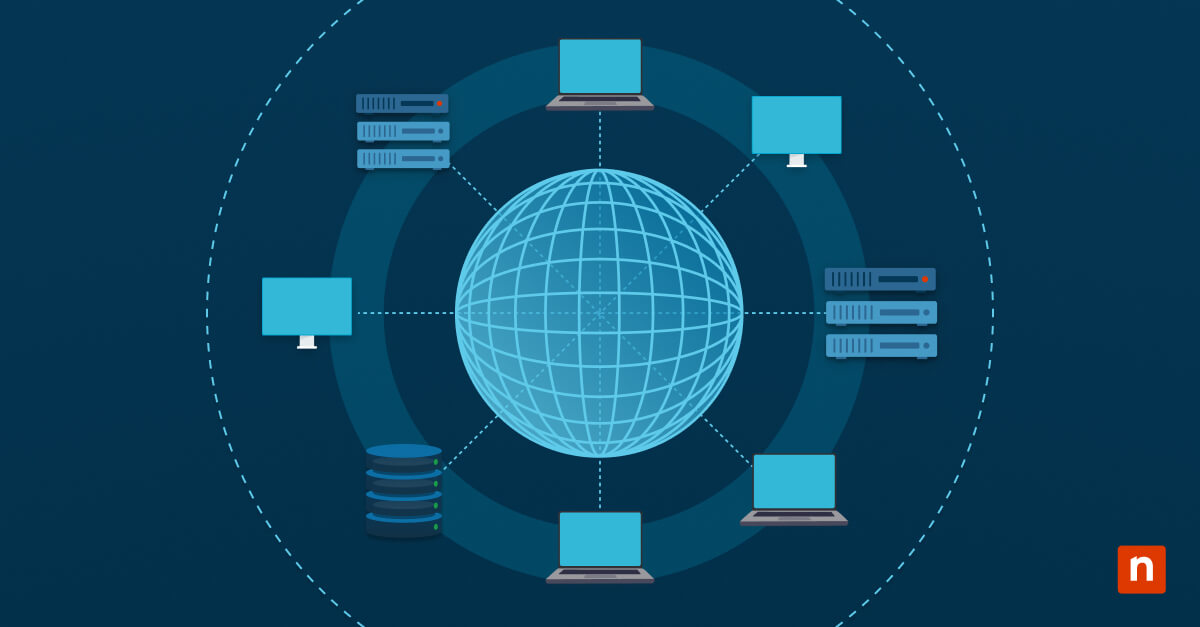Organizations across industries often operate with outdated technology infrastructure that continues to function but lacks modern capabilities. A survey revealed that 90% of organizations globally are hindered by legacy technologies that restrict growth and operational flexibility. These outdated systems continue running essential business operations while falling behind modern standards in performance, security and compatibility.
Identifying legacy IT systems
Legacy systems often reveal themselves through rising maintenance costs, frequent compatibility problems with modern solutions and reliance on outdated technology. Signs include the need for specialized knowledge that few staff members have and the lack of security patches from vendors who no longer support the platform.
What is legacy IT?
The term refers to outdated computing systems, programming languages, application software or related hardware still in use despite being obsolete by current standards. These systems typically remain operational because they continue to serve essential business functions, making replacement challenging without disrupting operations.
Legacy IT systems commonly include mainframe applications, outdated database platforms, custom-built applications using obsolete programming languages and hardware systems no longer supported by manufacturers.
The age threshold for considering something “legacy” varies by technology type and industry. In sectors like mobile application development, systems may be considered legacy within 2-3 years, whereas in more stable environments, such as banking, legacy systems may be decades old. The key identifier isn’t necessarily age but rather the growing gap between the system’s capabilities and current technology standards, coupled with increasing maintenance challenges and compatibility issues.
Common system indicators
There are several telltale characteristics that distinguish legacy IT systems from modern solutions.
When evaluating your technology landscape, watch for these common indicators:
- Applications running on obsolete operating systems that no longer receive security updates
- Software requiring outdated browsers or plugins that pose security vulnerabilities
- Systems with limited or no vendor support available
- Applications using programming languages no longer widely taught or used
- Hardware that has exceeded its recommended operational lifespan
Financial impact assessment
The financial burden of maintaining legacy IT extends far beyond the visible line items in your IT budget. While direct maintenance costs can be obvious, the true financial impact encompasses numerous hidden expenses that accumulate over time. These costs often remain unquantifiable in traditional financial assessments but can significantly affect your overall efficiency and profitability.
Legacy IT costs breakdown
Legacy IT costs manifest in multiple forms across the organization, creating financial drains that grow increasingly burdensome over time. Direct expenses include hardware maintenance contracts, specialized support staff salaries and licensing fees for outdated software. These visible costs typically appear as line items in IT budgets, making them relatively straightforward to track.
The more substantial financial impact often lies in indirect expenses. These include productivity losses from slower processing capabilities, opportunity costs from delayed implementation of new business initiatives and increased security and compliance expenditures.
Additional costs arise from integration challenges when connecting these systems with newer technologies, often requiring expensive custom development work or middleware solutions. Organizations frequently underestimate these indirect expenses when calculating the total cost of ownership for aging systems.
Hidden maintenance expenses
With so many competing priorities, IT teams often have to put legacy systems on the back burner, letting them run as they are instead of replacing them on time. However, the longer these systems remain in place, the more they quietly drain resources.
While keeping old systems functional might seem cost-effective in the short term, the hidden costs usually outweigh any savings from delaying upgrades. Legacy IT systems rack up expenses in several ways:
- Technical debt: Temporary fixes pile up, making systems more fragile and harder to troubleshoot.
- Specialized skills shortage: As talent shifts to modern platforms, it gets harder (and more expensive) to find people who can maintain outdated systems.
- Knowledge transfer costs: When system experts leave, you face higher costs for documentation, training and onboarding.
- Undocumented changes: Over time, quick fixes and workarounds create hidden complexities that complicate future updates and migrations.
- Opportunity costs: Legacy systems slow down innovation and limit your ability to stay competitive in a fast-moving market.
- Integration challenges: Older systems often struggle to connect with newer technologies, which can impact business growth and agility.
Security and compliance vulnerabilities
Legacy IT systems pose significant security and compliance challenges across various industries. Most were built for a completely different threat landscape, long before today’s cybersecurity risks and regulations existed. As a result, they’re more vulnerable to modern attacks and increasingly harder to keep compliant with current standards.
Outdated protection mechanisms
Legacy IT systems typically rely on security architectures that were designed for earlier technological eras when today’s sophisticated attack vectors didn’t even exist. These outdated protection mechanisms lack modern security features like advanced encryption, multi-factor authentication, and comprehensive logging capabilities. Many legacy platforms were built when network perimeters provided adequate protection—an approach now rendered ineffective by cloud computing and remote work arrangements.
Vendors eventually discontinue security patches for older systems, leaving known vulnerabilities unaddressed. This creates an expanding attack surface that sophisticated threat actors can exploit. As a result, security teams face growing challenges implementing compensating controls around these systems, often requiring complex network segmentation and additional monitoring tools. The integration points between legacy and modern systems create particular security concerns, as these connections may bypass security measures or introduce inconsistent authentication mechanisms.
Regulatory risk factors
Compliance requirements continue to evolve while legacy systems remain static, creating widening gaps between system capabilities and regulatory expectations. Modern data protection regulations like GDPR and CCPA mandate capabilities such as data portability, right to erasure and comprehensive audit trails that many legacy systems simply cannot provide without extensive modifications.
Healthcare organizations face a particular challenge with legacy IT systems that cannot meet HIPAA requirements for data encryption and access controls. Financial institutions also struggle with legacy platforms that lack the transaction monitoring and reporting capabilities required by current anti-money laundering regulations. The growing regulatory focus on data governance creates additional compliance burdens for organizations with legacy IT systems that lack metadata management and data lineage tracking capabilities.
Legacy IT best practices for management
While modernization represents the ideal long-term solution for legacy IT challenges, most organizations must manage these systems for extended periods during the transition planning and implementation process. Effective legacy IT best practices require a structure and balance that increase operational stability while mitigating risk.
Documentation strategies
Comprehensive documentation is key for the effective management of legacy systems. Start by creating detailed system inventories that catalog all components, including hardware specifications, software versions, customizations and integration points. Document operational procedures for routine maintenance, backup processes and disaster recovery scenarios to maintain consistent execution regardless of personnel changes.
Consider these documentation approaches:
- Record video walkthroughs of maintenance tasks performed by experienced staff.
- Create data flow diagrams to show how information moves through the system.
- Maintain a configuration management database (CMDB) to track all system settings.
- Develop interface specifications for every integration point.
Use a centralized repository with version control to store and manage all documentation.
After creating this documentation, implement regular review cycles to maintain accuracy as systems evolve. Assign clear ownership for maintaining each documentation component, preventing the common problem of outdated information.
How NinjaOne helps you control IT costs
Managing IT costs doesn’t have to mean doing more with less. NinjaOne helps you get more out of the resources and team you already have. By keeping your systems up-to-date, secure, and easy to manage, NinjaOne empowers your IT team to work smarter—not harder.
With centralized management, powerful remote tools and automation, you can boost efficiency, reduce overhead, and stay focused on what matters most.
See it in action—watch a demo or start your free trial!








